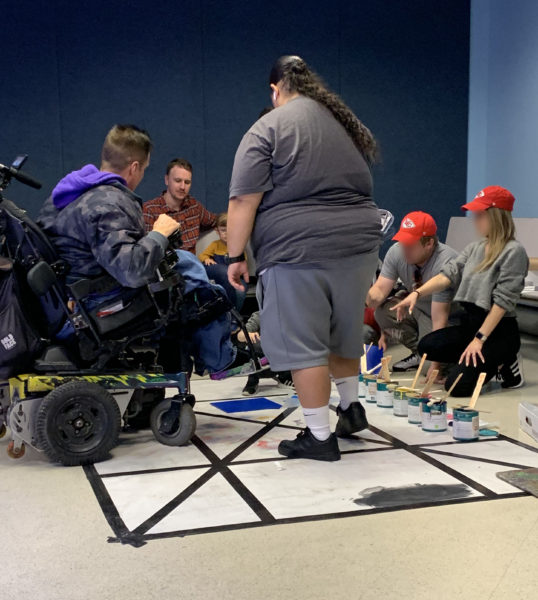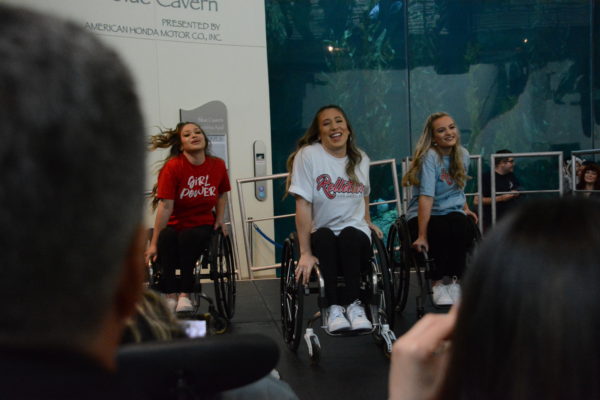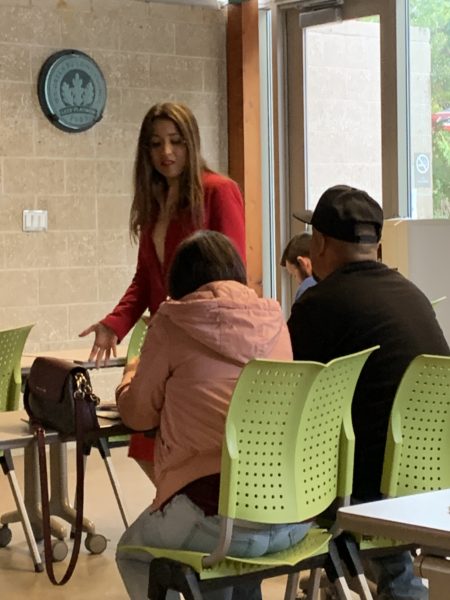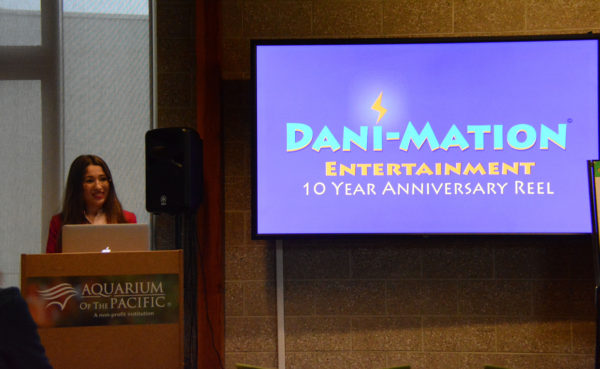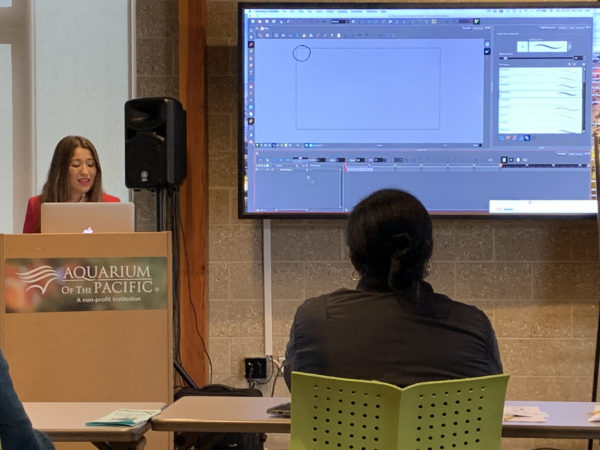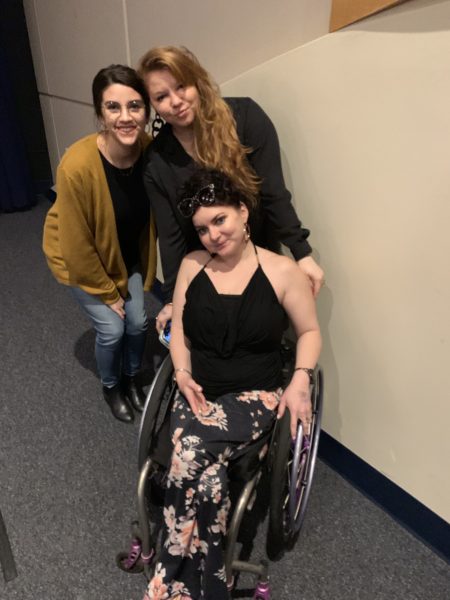by Noella Noelophile®
“What is animation?” asked Dani-Mation Entertainment founder and artist Dani Bowman.
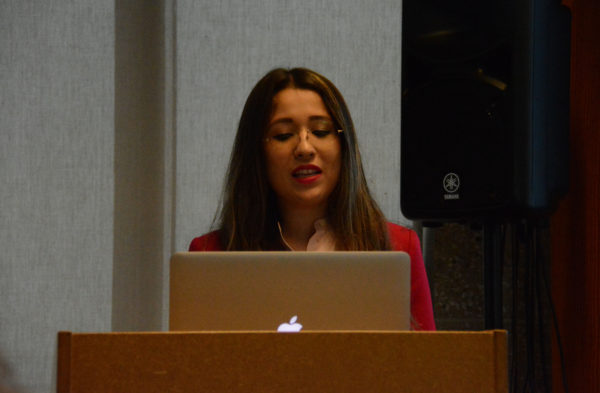 “Parents,…let’s see if I can explain to your kids what animation is.”
“Parents,…let’s see if I can explain to your kids what animation is.”
Day Two of Aquarium of the Pacific’s seventeenth annual “Festival of Human Abilities” had just started, at 9:00 on Sunday morning.
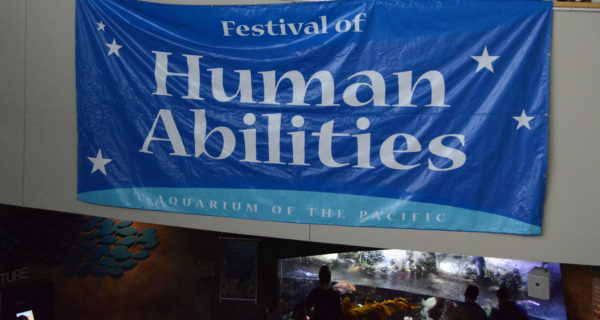 Throughout the day, artists with and without disabilities would lead free classes.
Throughout the day, artists with and without disabilities would lead free classes.
There would also be a number of performances, in a celebration of the creative spirit of people with disabilities.
A morning workshop
And indeed, Dani, who told her students she is “on the autism spectrum”, did explain animation. She also demonstrated two ways to create it, while teaching her animation workshop.
Animation has been Dani’s passion since childhood. She founded her company, Dani-Mation, at the age of eleven. Since the age of fourteen, according to her LinkedIn profile, she’s been working professionally. A recent college graduate, Dani’s accomplishments include premiering nine award-winning animated shorts at San Diego Comic Con. She also teaches summer animation camps, and has taught over 1000 teens and young adults with special needs.
On Sunday morning, she made creating the magic look easy.
First, she provided a “flip book” for each of her students .
“When you flip,…the drawing is coming to life. It works like magic. It’s magic, kids!”
Dani, who would receive a special award later in the afternoon, talked the group through creating a simple animation with the flip books.
Next, the audience met her mentee, Zoe Ramos. Zoe showed her animated short, “The Indiana Cheese Muncher”.
Then, technology came into the mix. Bringing up her Harmony software, Dani demonstrated a digital animation technique.
Her goal, she told the class, was to show students with autism that anything is possible.
Color, music, instruction
Attendees would have a number of opportunities to create art–and to interact with the artists and performers–throughout Day Two of the festival.
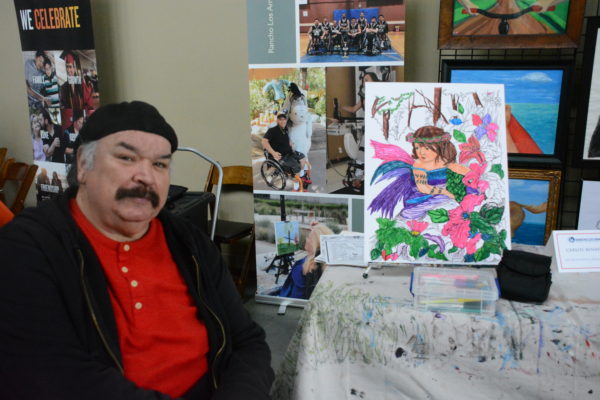 In the Aquarium’s Great Hall, mixed-media artist Carlos Benavides, of Benavides Studios, was prepared for a second day of teaching.
In the Aquarium’s Great Hall, mixed-media artist Carlos Benavides, of Benavides Studios, was prepared for a second day of teaching.
He had brought copies of one of his paintings for young students to color. Day One of the Festival, on Saturday, had already brought a number of enthusiastic participants, he explained.
 Further along the Great Hall, Carlos’ work was on display.
Further along the Great Hall, Carlos’ work was on display.
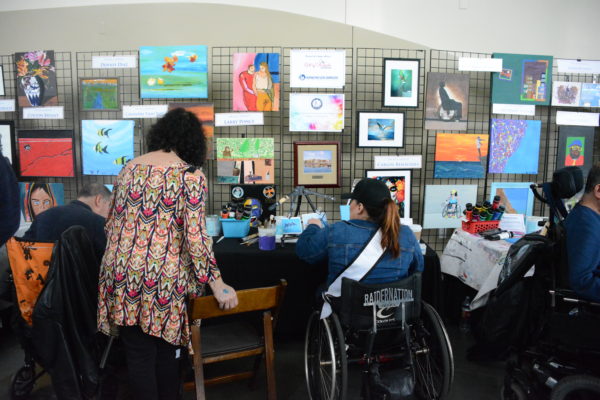 Several artists were painting onsite, as well, as part of “The Art of Rancho” exhibition from Rancho Los Amigos.
Several artists were painting onsite, as well, as part of “The Art of Rancho” exhibition from Rancho Los Amigos.
And the day’s first dance performances, by Straight Up Abilities, wowed the audience.
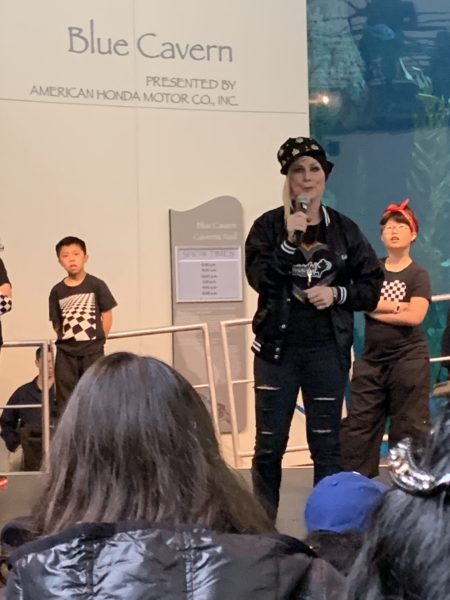 “Dance is for your body, your mind and your soul, and we all could use a little more dance in our lives,” Straight Up Abilities founder Robin Olive said. (Nonprofit Straight Up Abilities offers students with both physical and developmental disabilities the chance to take dance classes.)
“Dance is for your body, your mind and your soul, and we all could use a little more dance in our lives,” Straight Up Abilities founder Robin Olive said. (Nonprofit Straight Up Abilities offers students with both physical and developmental disabilities the chance to take dance classes.)
Robin explained that one of her dance groups had danced with the Royal Ballet, last summer. Another was to appear on America’s Got Talent next week!
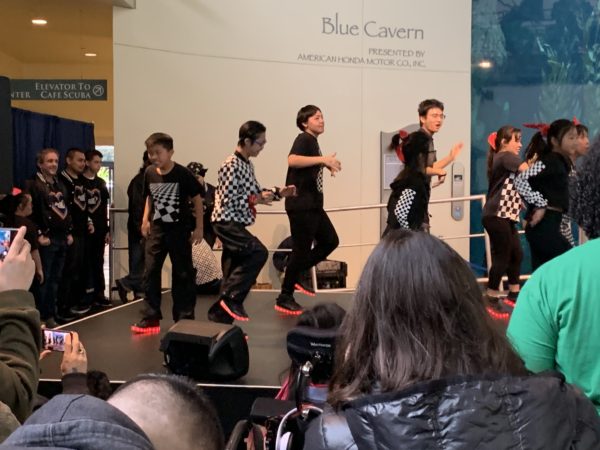 First, a group from Pasadena performed for the crowd.
First, a group from Pasadena performed for the crowd.
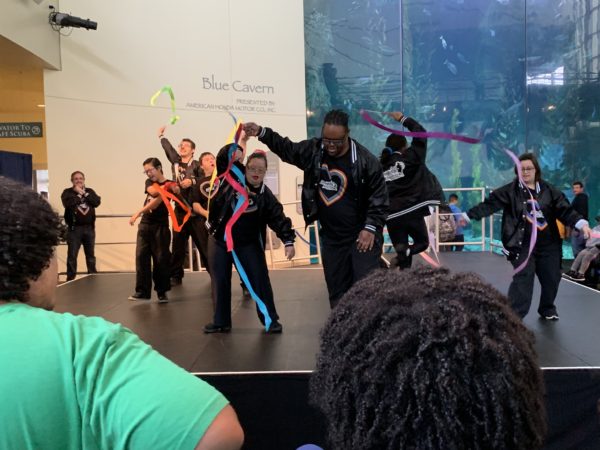 Then, the Long Beach group took the stage. The audience whooped and cheered.
Then, the Long Beach group took the stage. The audience whooped and cheered.
And right after Straight Up Abilities’ performance, Aquarium of the Pacific Senior Marketing Coordinator Peter Martineau invited the audience to a multimedia presentation on adaptive diving, by Cody Unser.
During the presentation, Cody explained that, at the age of twelve, she began feeling ill during a basketball game at her middle school.
“I got the worst headache I’d ever felt in my life,” she said. “So, the school called 911. They put me in the locker room…I (lay) down and that’s when my left leg went completely numb.
“And I couldn’t feel it or move it, and then my right leg was kind of tingling.
“Within a matter of twenty minutes, my life completely changed.”
But, even though she was hospitalized, doctors didn’t take her symptoms seriously. After running a series of tests, they sent Cody home.
“My parents were going through a divorce, so they thought I was making it up,” Cody said.
The next morning, her symptoms were worse–and she returned to the hospital.
“About a week later, the doctors gave me my fate, of transverse myelitis,” she continued.
“So basically, what happened was, my autoimmune system attacked my spinal cord.”
After a month of hospitalization, Cody went to rehab. But instead of being taught to walk again, she said, rehab was all about learning how to adapt to a wheelchair.
“It was probably the…darker days, because I was learning how to be in this box,” she said.
After returning home, Cody said, she “knew this happened to me for a reason–and I wanted to do something about it.” Accordingly, she and her mother started the nonprofit Cody Unser First Step Foundation.
Its three pillars: awareness, advocacy and quality of life.
Her older brother, Al, addressed the “quality of life” for his sister.
“He taught me how to look cool in the chair, (and) do wheelies, like an older brother would.
“He was depressed about seeing me be so sad. So he was like, ‘all right, Cody, you’re going to learn how to scuba dive’.”
Cody fell in love with scuba diving because it had nothing to do with her paralysis. She was learning something new. “Mentally, it just took me out of my depressed state,” she explained. She went through training and was certified as a diver.
“Our last dive, I got back on the boat and I told my mom, ‘this is the best thing on the planet’…It let me know that life’s not over, nothing is impossible. And so I wanted to give that feeling back to other people with disabilities.”
The result: Cody’s Great Scuba Adventures, which is her foundation’s quality of life program. “We teach people with disabilities how to scuba dive.”
Sharing a film her foundation had created, Cody showed the audience the experiences of some of her students: a group of kids from Indiana, with either spina bifida or cerebral palsy. “We took them to Key Largo to get certified (as scuba divers),” she said.
“If you can’t stand up, stand out–so I try my best to stand out as much as possible, and help others do the same.”
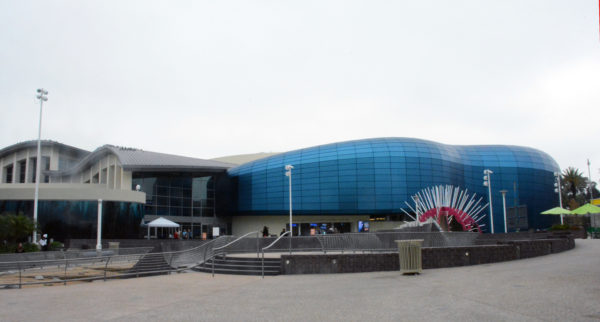 Day Two of Aquarium of the Pacific’s seventeenth Festival of Human Abilities had been incredible already! And it wasn’t even noon.
Day Two of Aquarium of the Pacific’s seventeenth Festival of Human Abilities had been incredible already! And it wasn’t even noon.
Wheelchair dancers, an American Sign Language performance, wheelchair painting and the Glenn McIntyre Heritage Award ceremony were among the events yet to come.

